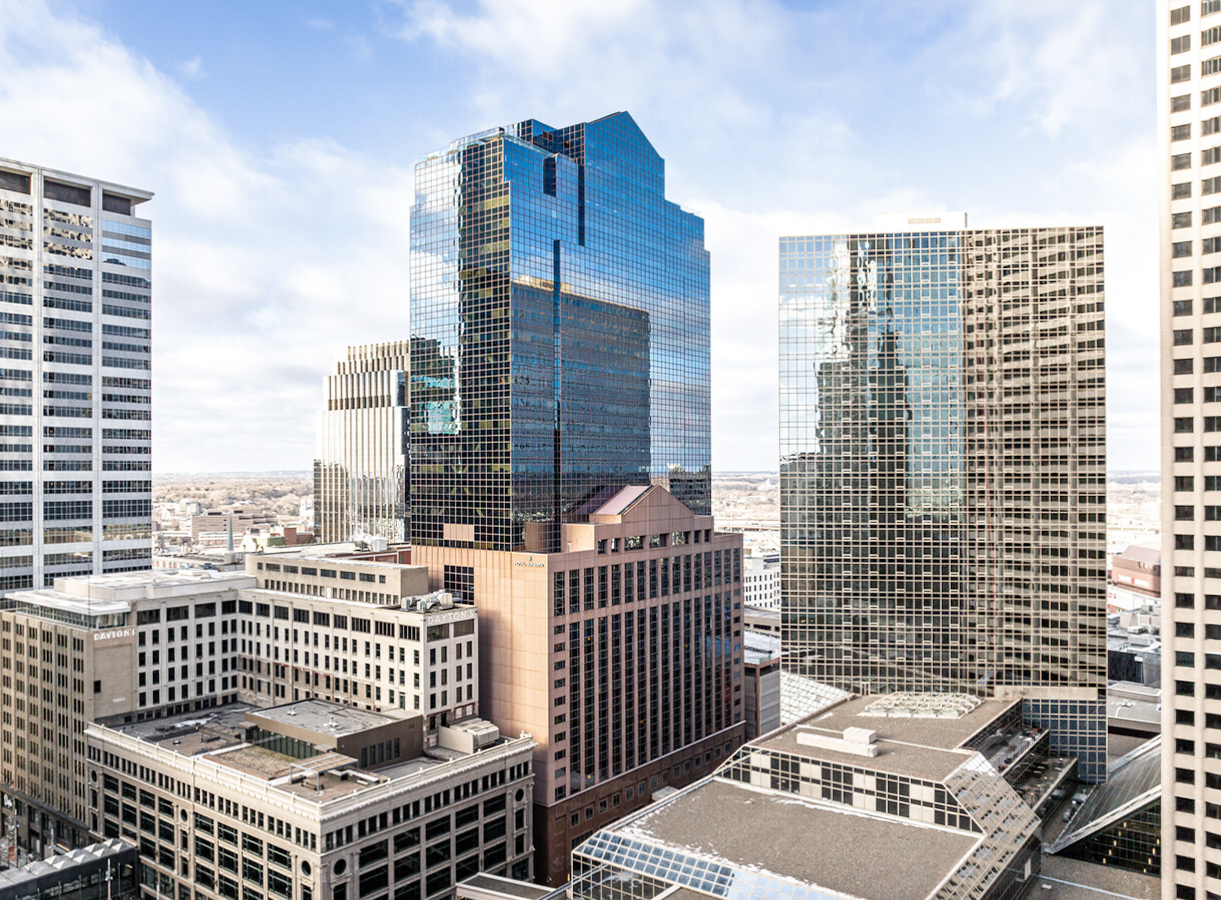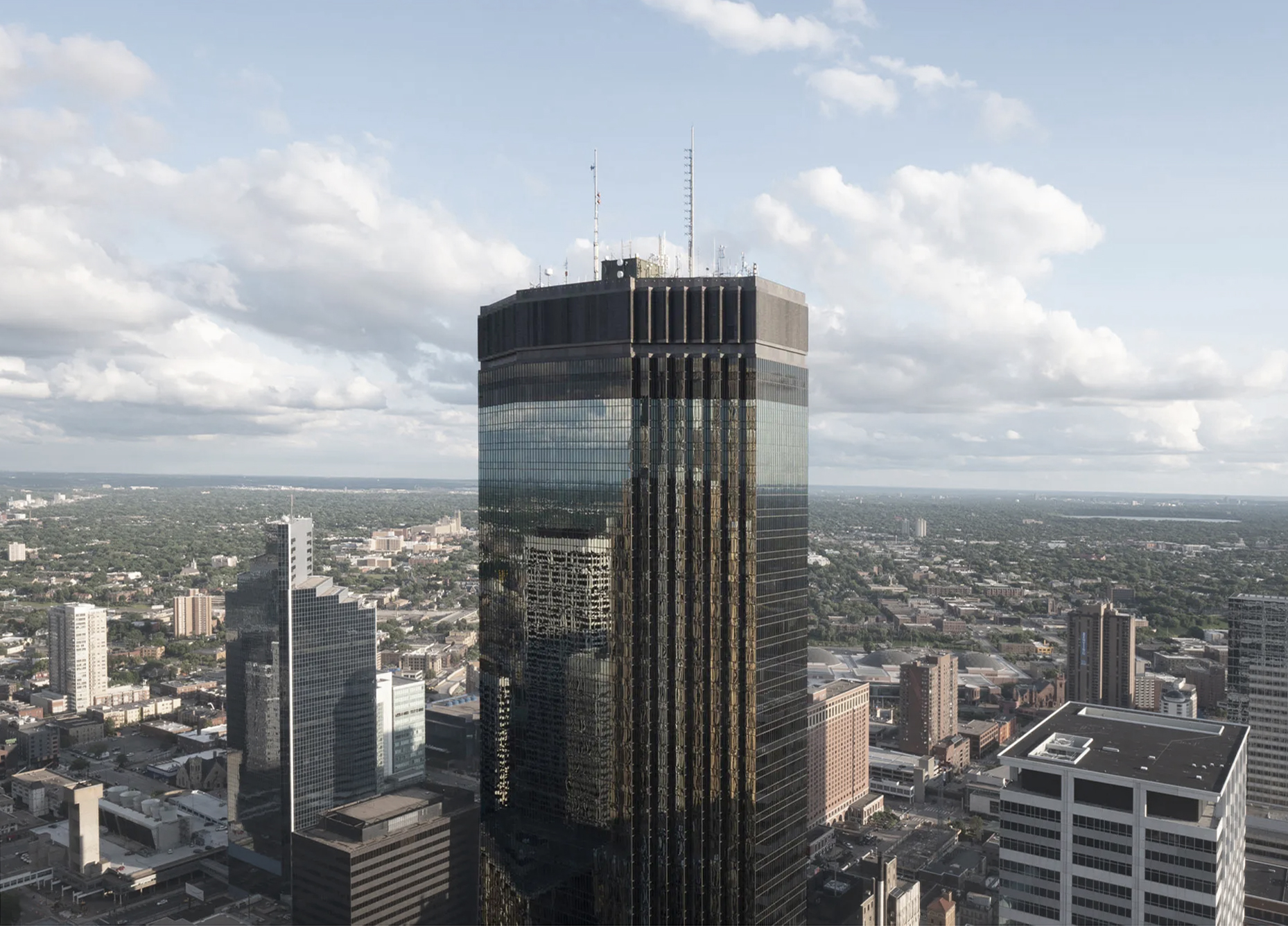The PwC Plaza is a Postmodernist skyscraper designed by Leonard Parker, and built between 1984 and 1987 in Minneapolis, MN.
PwC Plaza is not the only name you might know this building by though. The building is, or has also been known as Plaza VII.
Its precise street address is 45 South 7th Street, Minneapolis, MN. You can also find it on the map here.
The 19-story tower was built on top of the 17-story Royal Sonesta luxury hotel, to which it is connected.
The building underwent a major restoration in 2023. The architect commissioned to undertake this restoration was Studio BV.



